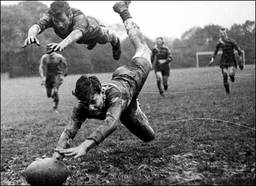
Scrum framework focuses on producing incremental deliverables in short and regular intervals (e.g. 2 - 4 weeks). Thus, it is well received in many software development projects. Subsequently, other industries are adapting Scrum framework to combat uncertainties and remain responsive to deliver better customer satisfaction.
Now the question is - what is the possibility to implement a PMO by using Scrum?
Roles
Events/ Activities
Artifacts
Critical Success Factors
Conclusion
As cited in The State of Scrum (June 2013), Scrum has gained its popularity and earned its successes outside of software industry. The approach to use Scrum to implement PMO is truely ground breaking and need a lot of courage to bring this to fruition. Thus, everyone in the team plays their role to make this a success.
May the Scrum Forces be with you.
Now the question is - what is the possibility to implement a PMO by using Scrum?
Roles
- Product Owner (PO) - Appointed from business that responsible to prioritize deliverable, clarify requirements and ultimately accountable for the success of PMO implementation.
- PMO Team Members (Team) - SMEs (subject matter experts) or consultants that are tasked to develop and implement PMO services, processes and tools.
- Scrum Master (SM) - Recruited to the team as a facilitator to ensure Scrum framework is practiced correctly and consistently. For matured Scrum practicing organization, this role is optional.
Events/ Activities
- Sprint Planning - PO explains his/ her requirements based on Product Backlog; the Team clarify and estimate the duration needed. Upon agreement, each Team member get the tasks they can performe. Thus, the sprint starts.
- Daily Scrum - SM and the Team have daily meeting (15 minutes max) to discuss:-
1. What has been done yesterday?
2. What is planned for today?
3. Any road block or challenges faced? - Sprint Review - At the end of sprint, the deliverable is demonstrated to PO for acceptance.
- Sprint Retrospective - This is the time everyone evaluates the working processes and agreement (a.k.a. lesson learned):-
1. What worked?
2. What did not work? - Backlog Grooming - PO sought second opinion from the Team to breakdown Product Backlog Item into smaller and manageable deliverable.
Artifacts
- Product Backlog - Owned by PO and it's a road map of PMO.
- Sprint Backlog - Owned by the Team and it's their work package of a sprint.
Critical Success Factors
- Product Owner has:-
1. authority and accountability on PMO's direction.
2. appreciation on the values and benefits of using Scrum.
3. the trust on the Team's capabilities and competencies. - Team has:-
1. formed their own working agreement and adhere to it.
2. mutual respect to each other despite they may have difference in opinions.
3. accountability for their individual deliverables and performance. - Scrum Master to:-
1. educate both PO and Team to use Scrum framework consistently and effectively.
2. protect the Team from anybody including PO on possible re-prioritization or addition of new features mid-ways.
3. seek to resolve the challenges faced by the team. - Ensure Entire Scrum framework is adopted and adhered to to gain intended benefits of it.
- Regular Inspection and Adaptation - When something is not working, everyone goes back to retrofit on how things are done (i.e. working processes and agreement) and not finger pointing on anyone.
Conclusion
As cited in The State of Scrum (June 2013), Scrum has gained its popularity and earned its successes outside of software industry. The approach to use Scrum to implement PMO is truely ground breaking and need a lot of courage to bring this to fruition. Thus, everyone in the team plays their role to make this a success.
May the Scrum Forces be with you.
 RSS Feed
RSS Feed


